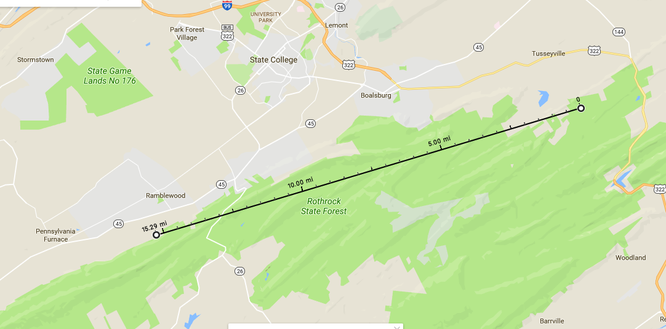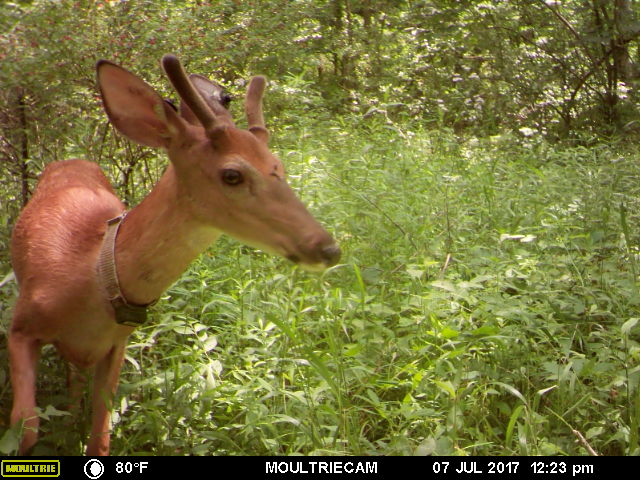Now that antlers are finished growing there is more incentive to place those cameras back out in the woods instead of having them sit in the closet.
That’s where you come in! Take the young buck in the photo that someone sent me recently. Without that photo we’d have no idea where he was or whether he was even alive!
That’s because from the type of collar I can tell he was captured as a fawn, and based on the location I have a pretty good idea where he was born.
So what have we learned from this photo of a collared deer?
- The collar is not causing a problem, and that’s a very good thing. When we radio-collar deer, there is always the risk of something going wrong. In this case, everything is perfect so we’re happy.
- The deer is still alive, but the only reason we know that is because of the photo. The battery on this collar probably died 6 months or more ago.
- This buck dispersed approximately 15 miles, and he was a spring disperser.
The photo was taken in early July on the Penn State Research Farm at Rock Springs. Young bucks disperse either in early summer (when fawns are born) or early autumn. Few disperse from mid-June through early September. This means he was a spring disperser and he has probably established his permanent adult home range in this area. Males generally complete their dispersal movement in 12-24 hours.
This deer was captured on our study area on the Rothrock State Forest. If so, he traveled down the ridge about 15 miles from where he was born. That’s a little bit above-average for Pennsylvania deer that average about 5 miles. However, the fact that he dispersed along the ridge is typical for deer in the Ridge and Valley Region in Pennsylvania.

This buck left his natal home range in the east and dispersed about 15 miles west along Tussey Mountain. Start and end locations are only approximations.
He’s a brave one because he even crossed State Route 26. Major roads and rivers shortstop most dispersing deer.
We have a series of blog posts about deer dispersal behavior beginning here.
So if any of you readers get a picture of a collared or ear-tagged deer we’d really appreciate it if you’d send it to us. We love to see and learn a bit more about our deer.
-Duane Diefenbach
If you would like to receive email alerts of new blog posts, subscribe here.
And Follow us on Twitter @WTDresearch
